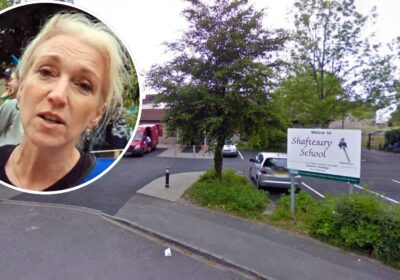by Susie Curtin
March is named after Mars, the Roman god of war. It is quite fitting, then, that today I am walking along the remains of a Roman road that stretches 22 miles from Old Sarum to the hill fort at Badbury Rings – a route I have only just discovered.
Although my quest is usually to find flora and fauna, my adventures, by default, have taken me through many ancient landscapes with histories and mythologies that have never failed to intrigue me. It all began on my childhood holidays to Cornwall and my parents’ fascination for the archaeological sites that dot the Cornish landscape. There are stone circles, quoits and barrows, and the famous ‘Polo mint’-shaped stone of ‘Men an Tol’ through which, as legend had it, I should pass my small body back and forth several times to cure all future ills.
Later, Dartmoor became home, and my favoured playground in which I stumbled upon the stone rows of Merivale and Drizzlecombe that led the visitor to the graves of bygone warriors. The wide views and rock-strewn, open moorland that was often shrouded in mist added to their mysticism. Who were these people, and what profound beliefs did they have to leave such evocative monuments that have stood the test of time and weather?
And now, my adventures are in Dorset where I am only just beginning to discover the extent of the Neolithic and Bronze Age settlements and cemeteries dotted across this landscape. One of these is the early Bronze Age round barrows at Oakley Down – a site I have driven past hundreds of times without hardly noticing. Now I find myself walking right beside it. As I stop to listen to the skylarks, I decide to leave the Roman road for a moment to meander around the 33 circles, ditches and mounds that emerge from the ground like giant mole hills or scar the grass into huge saucers. As I walk over these graves, I imagine the lives of the people whose remains lie beneath my feet – accompanied to the afterlife by amber, glass, pottery and bronze daggers. Unlike the earlier Neolithic long barrows whose chambers held many bodies, these barrows were designed for the individual and although we have lost many of these to farming, it is incredible how many still remain.
It was, however, their Neolithic predecessors who were the first migrant farmers to arrive from central Europe. It was they who began the mass deforestation that permanently transformed the landscape into what we see today. They would have hunted wolves, lynx and the occasional brown bear before the loss of habitat pushed these species to extinction – a scenario of forest clearance and biodiversity loss that has played out right across our planet. I can’t help wondering what this ancient land would have been like before man arrived with his axe.
Back on the path, I am again following in the ghost steps of the Romans who took the Bronze Age trackways and turned them into paved roads – initially to enable their military to navigate from one settlement to the other. This road would have originally gone all the way to Exeter. As I walk beside long stretches of beech woodland, I gather pace to cover the distance. But time is a more difficult concept to fathom. Like our ancestors, we are just ‘passing through’. The road on which I am walking was constructed 2,000 years ago, and yet here I am still using it. What will we leave behind that will feel so significant to future archaeologists? It is hard to imagine anything beyond the piles of plastic rubbish that line our own ‘trackways’. That too will still be here in 2,000 years but without any of the mystery, magic and intrigue the ancients have inspired in me today.
Dr Susie Curtin is a nature writer and qualitative researcher; wildlife travel blog at rewildingjourneys.com/; email curtin.susanna@gmail.com











Leave a Reply